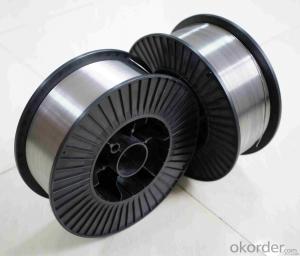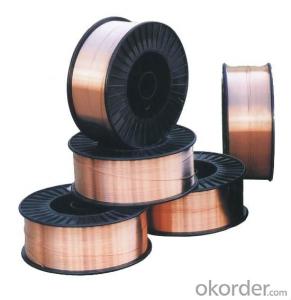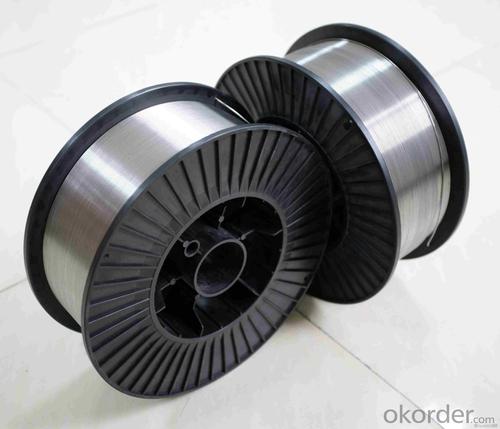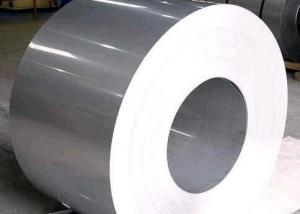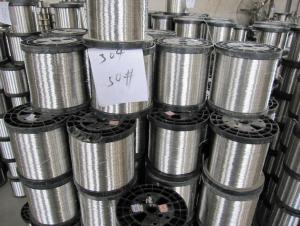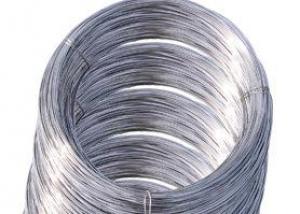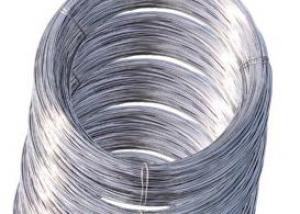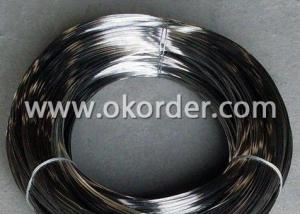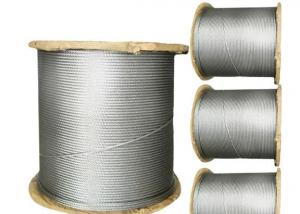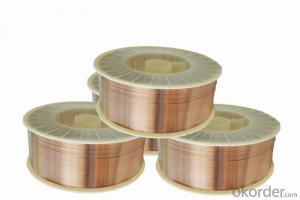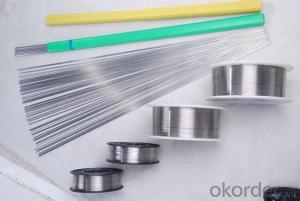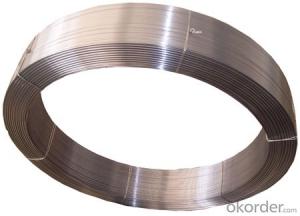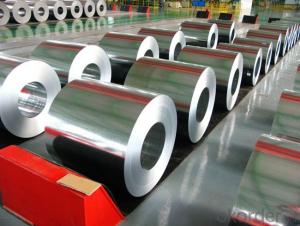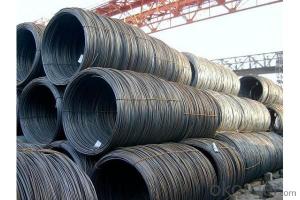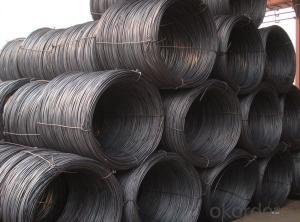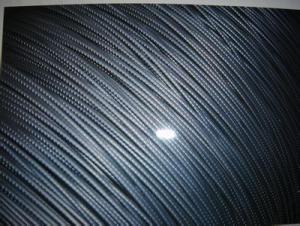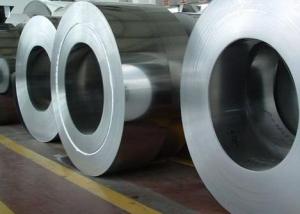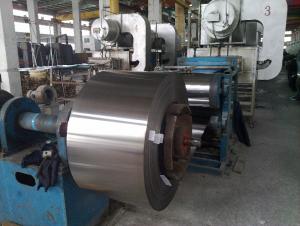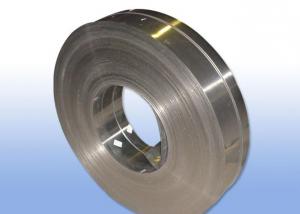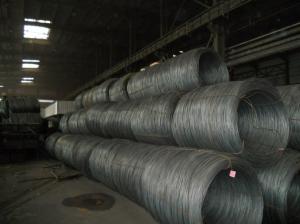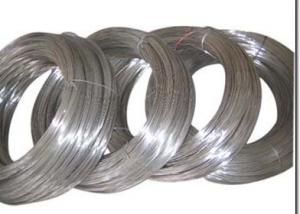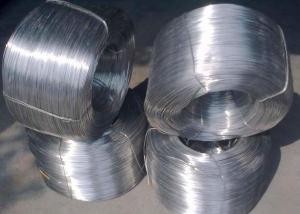Wire Rope Rebar Coil 5.5mm-14mm for Construction
- Loading Port:
- Tianjin
- Payment Terms:
- TT or LC
- Min Order Qty:
- 100 m.t.
- Supply Capability:
- 1000 m.t./month
OKorder Service Pledge
OKorder Financial Service
You Might Also Like
Wire Rope Rebar Coil 5.5mm-14mm for Construction
Main Structure of Wire Rope
Standard: AISI, ASTM, BS, DIN, GB
Grade: HRB400
Diameter: 5.5mm-10mm
steel grade: hrb400 , hrb500, gr.60 , hrb335,q235 q255 q275
weight: 1.6-1.9ton /coil
packing: by coil with steel wire
application: construction,building field
Description for Wire Rope
Type | rebar coil wire rope |
Steel Grade | Hrb400 , hrb500, gr.60 ,q235 ,q255,q275,sae1006,sae1008 |
Your required chemical composition. | |
Size | 5.5mm-10mm |
Unit weight | 1.6-1.9tons/coil |
Application | Building/project construction |
Packing | In coil with steel strip ,in bulk . |
MOQ | 1000tons(500for trial order ). |
Delivery Time | 25days . |
Payment | T/T , West Union , Cash , L/C. |
Trade Terms | FOB, CFR, CIF ,EXW |
Trans terms | FIO FILO FLT |
Loading port | Caofeidian /Jingtang/Tianjin,China |
Data of Chemical Composition for Wire Rope Coil
Content | C% | Mn% | Si% | Cr% | Ni% | S% | P% | Cr% |
HRB400 | 0.14-0.22 | 0.40-0.65 | 0.05-0.15 | 0.30max | 0.30max | 0.050 | 0.040 | 0.30min |
HRB400E | 0.14-0.22 | 0.40-0.65 | 0.15-0.30 | 0.30max | 0.30max | 0.050 | 0.040 | 0.30min |
HRB500 | 0.28-0.37 | 0.50-1.00 | 0.05-0.15 | 0.30max | 0.30max | 0.050 | 0.040 | 0.30min |
HRB500E | 0.28-0.37 | 0.50-1.00 | 0.15-0.30 | 0.30max | 0.30max | 0.050 | 0.040 | 0.30min |
FAQ
Why should you choose us:
Stable quality ----continous casting hot rolled production techenic, strictly quality control system.
Lower price -------Not the cheapest but the lowest price at the same quality .
Good service -----Satisfactory service within 24hours.
Delivery time ------15-25days for the mass production .
Discount---------------discount base on monthly large quantity purchase in long term.
Picture
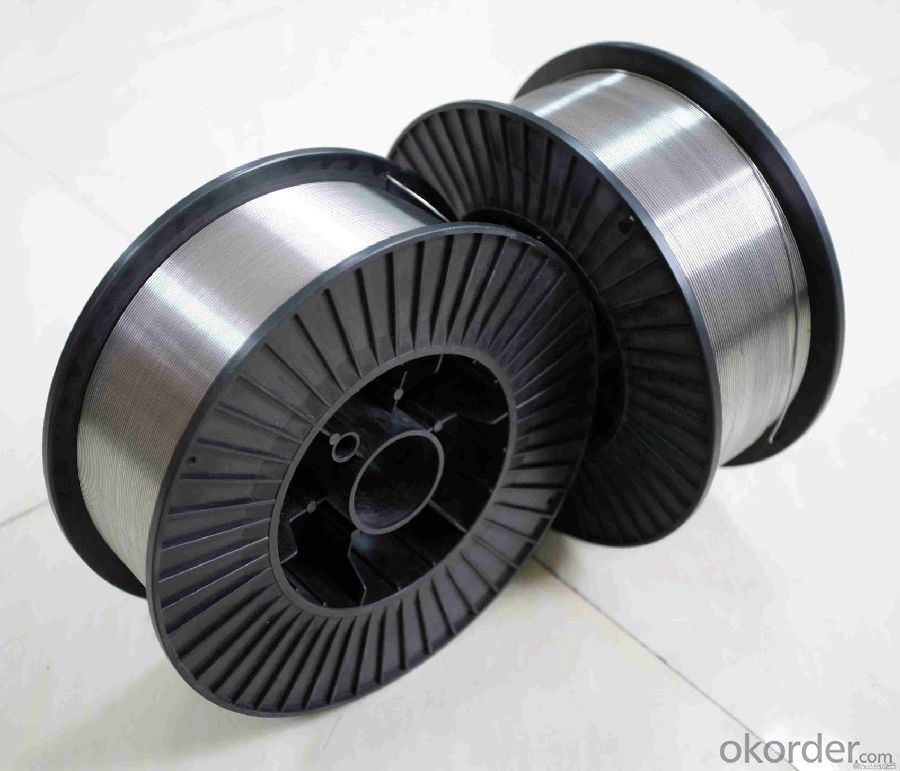
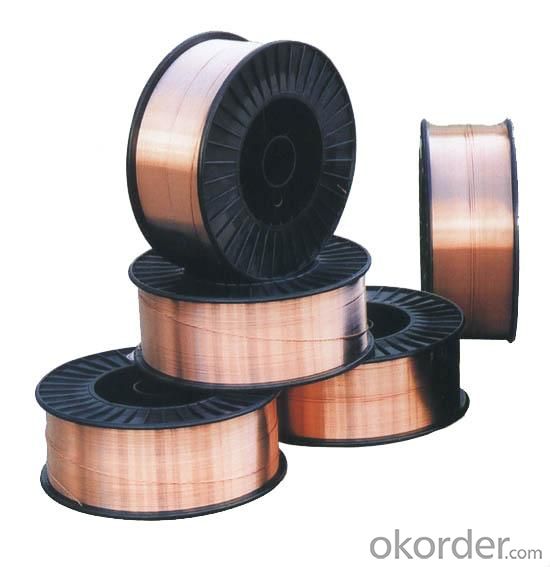
- Q: How is stainless steel wire mesh woven?
- Stainless steel wire mesh is woven using a process called plain weave or twill weave. In the plain weave method, the wires are woven in a crisscross pattern, with each wire passing over and under the adjacent wires in an alternating manner. This creates a simple and tight mesh structure. On the other hand, in the twill weave method, the wires are interlaced in a diagonal pattern, which gives the mesh a more robust and durable construction. This weaving technique involves each wire passing over two and under two adjacent wires, creating a distinctive diagonal pattern. Both plain weave and twill weave methods require precision and attention to detail to ensure a consistent and uniform mesh structure. The wires used in stainless steel wire mesh are usually thin and strong, allowing for a tightly woven and reliable mesh that is resistant to corrosion and wear. Overall, the process of weaving stainless steel wire mesh involves interlacing thin stainless steel wires in either a crisscross or diagonal pattern, resulting in a versatile and durable mesh that finds applications in various industries such as filtration, screening, and protection.
- Q: What are the different types of stainless steel wire crimping tools?
- On the market, you can find various stainless steel wire crimping tools catering to specific purposes and requirements. Here, we present some of the most commonly used types: 1. Handheld Crimpers: These crimping tools are basic yet widely utilized. They are portable, handheld devices that typically have adjustable crimping slots to accommodate different wire sizes. Handheld crimpers are suitable for crimping applications with low to medium volume. 2. Ratchet Crimpers: For a consistent and secure crimping outcome, ratchet crimpers offer additional leverage. They feature a ratchet mechanism for precise and controlled crimping that ensures a strong and reliable connection. Ratchet crimpers are generally employed in high-volume or professional applications. 3. Pneumatic Crimpers: Powered by compressed air, pneumatic crimping tools provide higher crimping force and speed compared to manual tools. They are ideal for heavy-duty applications where a large number of crimps need to be completed quickly and efficiently. 4. Hydraulic Crimpers: Hydraulic crimpers utilize hydraulic pressure to deliver high force for wire connections. They can handle larger wire sizes and are often used in industrial or heavy-duty applications that require a high level of reliability and precision. 5. Battery-Powered Crimpers: Offering mobility and convenience, battery-powered crimping tools are cordless. They are commonly used in situations where access to electricity is limited or when working in remote locations. These tools utilize rechargeable batteries and often come with adjustable crimping force settings. 6. Dieless Crimping Tools: Instead of fixed dies, dieless crimping tools use interchangeable jaws, allowing for versatility and flexibility in crimping different wire sizes and types. They are frequently used in applications where a wide range of wire sizes need to be crimped. Considering the specific requirements of your wire crimping application is crucial when selecting the appropriate type of stainless steel wire crimping tool that best suits your needs.
- Q: What's the difference between stainless steel screws and carbon steel screws?
- These two screws are different. They are not better or worse. Carbon steel screws are usually stronger than stainless steel screws, but they tend to rust.
- Q: Is stainless steel wire resistant to pitting corrosion?
- Yes, stainless steel wire is generally resistant to pitting corrosion. Pitting corrosion is a localized form of corrosion that occurs in certain environments, such as chloride-rich or acidic conditions. Stainless steel contains a minimum of 10.5% chromium, which forms a protective oxide layer on its surface. This oxide layer acts as a barrier, preventing the metal from being exposed to the corrosive environment and thus providing resistance to pitting corrosion. However, the resistance to pitting corrosion can vary depending on the specific grade of stainless steel and the environment it is exposed to. Some grades of stainless steel, such as 316 and 904L, have higher levels of chromium and molybdenum, which further enhance their resistance to pitting corrosion. Therefore, it is important to select the appropriate grade of stainless steel wire based on the specific application and the corrosive environment it will be exposed to.
- Q: How to distinguish between 302 stainless steel screws and 304 stainless steel screws?
- 302 stainless steel and 304 stainless steel are suitable for food processing, storage and transportation. It has good processability and weldability. Plate type heat exchanger, corrugated pipe, household appliances (1, 2 kinds of tableware, kitchen cabinet, indoor pipeline, water heater, boiler, bath), auto parts (windshield wiper, muffler, mold), medical appliances, building materials, chemical, food industry, agriculture, marine parts, millet mobile phone etc.. 304 stainless steel is a nationally recognized food grade stainless steel.
- Q: Can stainless steel wire be used for wire baskets or trays?
- Stainless steel wire is suitable for wire baskets or trays due to its strength, durability, and resistance to corrosion. It is an excellent material for various applications, including wire baskets and trays, thanks to these qualities. The baskets or trays can safely hold and support heavy items without bending or breaking because of the high tensile strength of stainless steel wire. Moreover, the wire baskets or trays can be used in environments where moisture or chemicals may be present without worrying about rusting, as stainless steel is corrosion resistant. The smooth surface of stainless steel wire makes it easy to clean and maintain, ensuring hygiene and preventing the accumulation of dirt or bacteria. In conclusion, stainless steel wire is a reliable and practical option for wire baskets or trays.
- Q: Is stainless steel wire suitable for high-temperature applications?
- Indeed, stainless steel wire proves to be a fitting option for high-temperature applications due to its exceptional heat resistance characteristics. Withstanding elevated temperatures without compromising its strength or structural integrity, stainless steel wire finds extensive utilization in industries like automotive, aerospace, and manufacturing, where exposure to extreme heat and thermal cycles is prevalent. Moreover, its resilience against oxidation and corrosion further guarantees its durability and reliability in high-temperature environments. Additionally, stainless steel wire retains its mechanical properties even at elevated temperatures, rendering it an optimal selection for diverse industrial processes necessitating heat resistance.
- Q: Is stainless steel wire easy to clean?
- Yes, stainless steel wire is easy to clean. Due to its non-porous and smooth surface, it can be easily wiped clean with a damp cloth or washed with soap and water. Additionally, stainless steel is resistant to rust and corrosion, making it a low-maintenance option for cleaning.
- Q: What are the different types of stainless steel wire rope thimbles?
- There is a wide variety of stainless steel wire rope thimbles available in the market, each serving specific needs and applications. The designs and constructions of these thimbles vary. The first type is the standard thimbles, which are commonly used in different industries. They are made of stainless steel and have a simple design with a smooth surface. These thimbles provide basic protection and support to the wire rope, preventing any damage or fraying. Next, we have the heavy-duty thimbles that are specifically designed to withstand higher loads and offer increased strength and durability. They are commonly utilized in heavy lifting or rigging scenarios where the wire rope is exposed to extreme stress or tension. Open thimbles come with a gap or opening on one side, enabling easy installation or replacement of the wire rope. They are frequently used when the wire rope needs frequent adjustments or changes. For added protection against corrosion and abrasion, there are plastic-coated thimbles. These thimbles have a plastic coating or sleeve that extends the lifespan of the wire rope by preventing direct contact with moisture or harsh chemicals. Wire rope clip thimbles consist of both a thimble and a wire rope clip, working together to securely fasten the wire rope in place. They are commonly employed in applications where preventing slippage is crucial. Lastly, we have swage thimbles that are crimped or swaged onto the wire rope, creating a strong and permanent attachment. They are commonly used when a reliable and secure connection is required. To ensure you choose the most suitable stainless steel wire rope thimble for your specific needs, it is essential to consider the requirements of your application and consult with a knowledgeable supplier or engineer.
- Q: What are the different methods of cutting stainless steel wire?
- There are several methods of cutting stainless steel wire, including using wire cutters, shears, angle grinders with cut-off wheels, electric saws, and plasma cutters. The choice of method depends on the thickness and length of the wire, as well as the desired precision and speed of the cut.
Send your message to us
Wire Rope Rebar Coil 5.5mm-14mm for Construction
- Loading Port:
- Tianjin
- Payment Terms:
- TT or LC
- Min Order Qty:
- 100 m.t.
- Supply Capability:
- 1000 m.t./month
OKorder Service Pledge
OKorder Financial Service
Similar products
Hot products
Hot Searches
Related keywords
